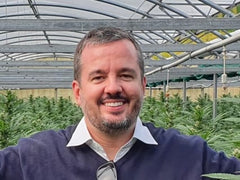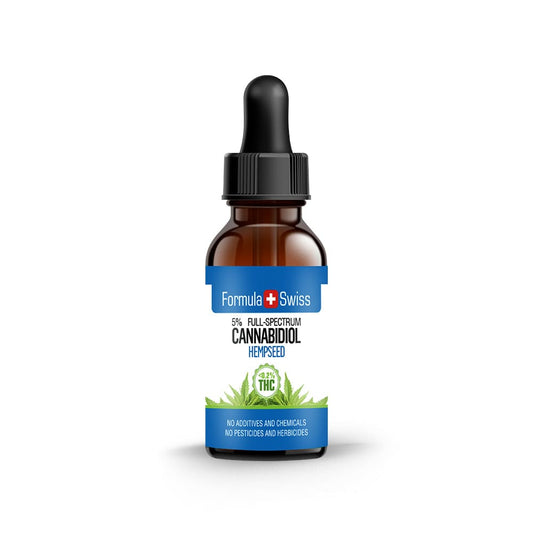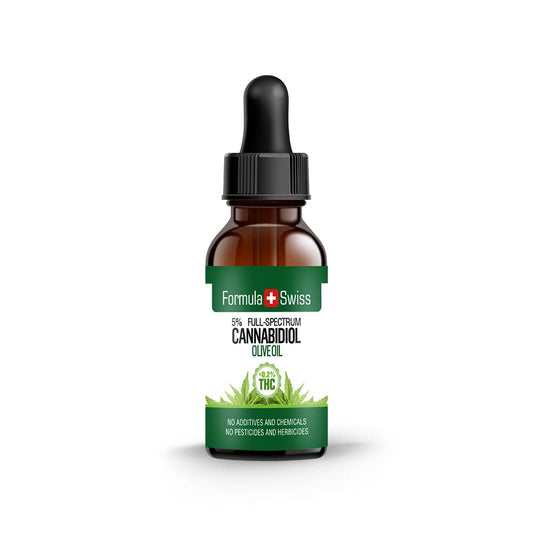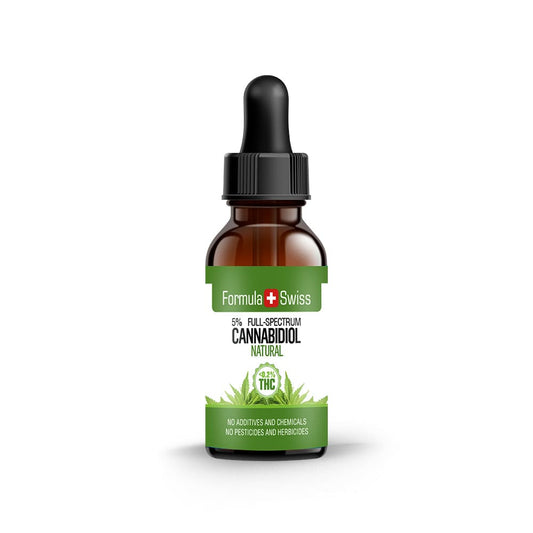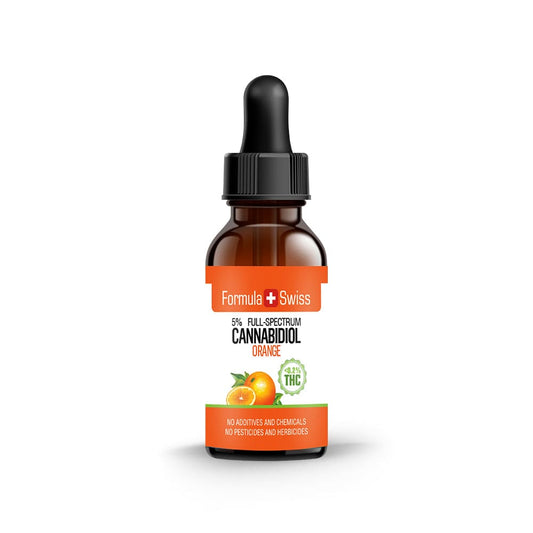CBCV, short for cannabichromevarin, is one of the lesser-known cannabinoids found in small amounts in certain hemp strains. It’s closely related to CBC (cannabichromene) but has a slightly different structure, placing it in the “varin” group of cannabinoids. This structural variation, though minor, could influence how it behaves during extraction or formulation.
After more than a decade working with hemp and its many compounds, I’ve found that cannabinoids like CBCV, ones most people haven’t heard of—often offer the most insight into the plant’s complexity. While research into CBCV is still limited, it’s beginning to draw interest among those of us who study the wider cannabinoid profile.
In this article, I’ll take a closer look at what CBCV is, how it fits into the broader cannabinoid family, and why it’s starting to show up more in conversations about cannabis science and product development.
Prefer watching over reading? This video covers the key points from the article:
Save up to 30% when you order your CBD oil today
Key takeaways
- Cannabichromevarin (CBCV) is a lesser-known cannabinoid present in the cannabis plant.
- Detailed understanding of CBCV's interactions is essential, as it expands beyond the endocannabinoid system.
- Research into CBCV is still developing, indicating a world of potential that has yet to be fully explored.
- The exploration of minor cannabinoids like CBCV is crucial for advancing cannabis science.
This article is provided for informational purposes only and does not relate to any of the products available in our webshop. For more information, please see our full disclaimer.
Introduction to CBCV (Cannabichromevarin)
I find cannabichromevarin (CBCV) fascinating. It's not as well-known as CBD and THC, but it's a key cannabis component. Now, CBCV is getting more attention, helping us learn more about minor cannabinoids.
Found in the cannabis plant, CBCV might unlock new ways to help people. Its effects on the human body could be different from THC and CBD. This makes CBCV special among cannabis components.
While THC and CBD get a lot of attention, CBCV is gaining interest. It has unique qualities that could be very useful. My goal is to explore CBCV's role in cannabis research. This is driven by curiosity and a desire to share more about cannabis components.
The chemistry of CBCV
Looking at the chemistry of CBCV (Cannabichromevarin) gives us a clearer view of how cannabinoids function and what sets each one apart. While CBCV shares similarities with other cannabinoids at the molecular level, it also has its own distinct structural traits that may influence how it behaves in different contexts.

One key part of CBCV's chemistry is how it interacts with the endocannabinoid system's receptors, like CB1 and CB2. These interactions are important for finding new uses for CBCV in medicine. The molecular structure also affects how stable and reactive CBCV is, which impacts its use in medicine and fun.
The chemical properties of CBCV include its solubility and boiling point. These properties are important for extracting and processing CBCV. Knowing these helps create better ways to get CBCV without losing its benefits.
Looking closely at CBCV's molecular details leads to new research and uses. By studying CBCV's chemistry, we gain new insights and ways to use cannabinoids. This helps us understand the cannabis plant better.
Order and get up to 30% off your CBD oil
Exploring the origins of CBCV in cannabis
When I look at CBCV in the context of the cannabis plant, it becomes clear that its presence is shaped by a combination of genetics, environmental factors, and plant biochemistry. Although CBCV hasn’t been studied as extensively as compounds like CBD or THC, it still has its own set of characteristics—ones that are influenced by the plant’s genetic profile.
The way CBCV is formed follows a similar biosynthetic pathway to other major cannabinoids. Whether CBCV appears in significant amounts depends largely on the plant’s genetics, which also affect how the compound interacts with the rest of the plant’s biological systems.

A research paper published in bioRxiv highlights how natural genetic variation in the cannabis plant influences the function of key enzymes involved in cannabinoid biosynthesis. These specialised enzymes, particularly cannabinoid oxidocyclases, convert cannabigerolic acid (CBGA) into various cannabinoids under specific conditions.
While CBCV production is not directly addressed, the study demonstrates that genetic mutations can significantly alter enzyme activity and product specificity, which may include pathways leading to compounds like CBCV. Environmental factors such as temperature and light also play a crucial role in modulating these biochemical processes.
Differences between CBCV, CBD, and THC
CBCV, CBD, and THC interact with the body differently due to the unique ways they engage with cannabinoid receptors.
THC is known for its psychoactive properties, while CBD does not produce the same effects. CBCV is a lesser-known cannabinoid that may have distinct characteristics of its own, though further scientific study is required to clarify its roles and mechanisms.
Investigating cannabis genetics is essential for understanding how cannabinoids like CBCV are biosynthesised. This insight can support the development of more targeted cultivation strategies for research and industrial applications. It also contributes to a broader understanding of plant biology and phytochemical diversity.
What is the difference between CBD and THC?
CBCV (Cannabichromevarin) and its role in the plant
The role of CBCV in cannabis has puzzled scientists for years. It plays a key part in plant biology. CBCV helps the plant adapt and stay healthy. It shapes the plant's structure and how it interacts with its surroundings.
A study from the journal Frontiers in Pharmacology in 2023 highlights the diverse roles of cannabinoids in Cannabis sativa, including minor compounds like cannabichromevarin (CBCV).

While the study does not specifically isolate CBCV's functions, it emphasises that cannabinoids and terpenes in general contribute to the plant's defence mechanisms against pests and environmental stress.
These compounds, produced in glandular trichomes, also play a critical role in the synthesis of essential oils and terpenes, which are vital for the plant’s survival, aroma, and ecological interactions.
Studying CBCV could change how we see plant biology. It could show how cannabis helps plants defend themselves. This could give us new insights into its evolution and importance in nature.
Harvesting and extraction techniques for CBCV
The extraction of CBCV highlights just how important proper cannabis processing is—both to preserve the compound and to ensure its purity. The way the plant is harvested plays a big role in the quality of the final extract.
To begin with, plants that naturally produce higher levels of CBCV are carefully selected. From there, harvesting techniques are tailored to protect the delicate trichomes where cannabinoids like CBCV are found. Using the right tools and maintaining a controlled environment helps maintain the compound’s integrity throughout the process.

Next, use High-Performance Liquid Chromatography (HPLC) for CBCV purification. It separates CBCV from other cannabinoids. This increases CBCV's concentration and removes impurities. It makes CBCV of higher quality, useful for research and other applications.
| Technique | Purpose | Outcome |
|---|---|---|
| Harvesting | Isolate CBCV-rich trichomes | Pure raw extract |
| CBCV extraction | Separate CBCV from other cannabinoids | Enhanced purity and potency |
| CBCV purification | Remove impurities and concentrate CBCV | High-concentration CBCV suitable for research |
By using these advanced methods, it will improve CBCV purification and concentration. Every step in cannabis refinement is crucial for the final product. It's about setting new standards in the cannabinoid world.
Order CBD oil now and save as much as 30%
Comparing CBCV with CBD
The study of cannabis diversity sheds light on CBCV. These minor cannabinoids contribute to a broader understanding of the plant’s properties. They demonstrate how various components of the plant interact within its natural matrix.
When examining CBCV versus CBD, it is important to explore emerging research on CBCV. This helps highlight how CBCV may differ from CBD in terms of its characteristics and interaction with the endocannabinoid system.
| Cannabinoid | Key influence | Research level |
|---|---|---|
| CBCV | Under investigation | Emerging |
| CBD | Non-psychoactive interaction profile | Well-established |
Minor cannabinoids, including CBCV, are believed to work together in the plant in what is commonly referred to as the 'entourage effect'. This concept suggests that the presence of multiple cannabinoids and other compounds may influence the overall profile of the plant.

Ongoing study of minor cannabinoids like CBCV plays a vital role in deepening scientific knowledge. Understanding how these compounds relate to one another supports efforts in botanical research and agricultural refinement.
What is the entourage effect in cannabis?
The future of CBCV in cannabis science
As research into cannabinoids pushes forward, CBCV is starting to stand out for its unique traits and the fact that it hasn’t been studied nearly as much as the big names like THC and CBD. It’s one of those minor cannabinoids that’s beginning to spark curiosity among scientists looking to understand the full chemical complexity of the cannabis plant.
Researchers are digging into how CBCV is made, how it behaves, and how it interacts with other parts of the plant. It’s all part of a broader effort to make sense of the cannabis plant’s incredibly rich profile—and to see what kind of potential these lesser-known compounds might hold.

What’s exciting is that new tools and technologies are giving scientists a clearer picture of CBCV than ever before. From mapping plant genetics to detailed chemical analysis, the field is evolving fast. And with that, CBCV is slowly earning its place in the spotlight.
It’s still early days, but there’s a growing sense that CBCV could have a real role to play in shaping the next chapter of cannabinoid science. There’s so much more to learn, and that’s what makes it such an intriguing area to watch.
Personal perspective
After spending more than a decade working closely with hemp and cannabinoids, I’ve learned that the plant still has plenty of surprises. CBCV is a perfect example of that. It’s not one of the big-name cannabinoids that usually get all the attention, but it reminds me just how layered and complex the hemp profile really is.
These lesser-known compounds might seem minor, but they all play a role in shaping the plant’s overall chemistry, and understanding them gives us a fuller picture of what hemp truly offers.
What I find especially interesting about CBCV is its structure. It’s part of the varin family, which sets it apart in subtle but meaningful ways. It doesn’t show up in large amounts, but it’s gaining traction among those of us who take a deeper look at the plant’s makeup.
As more people start to explore beyond the usual suspects, I think CBCV will naturally become part of the broader conversation about where hemp is headed.
Don’t miss out—save up to 30% when you purchase CBD oil today
Frequently asked questions
What exactly is CBCV (Cannabichromevarin)?
CBCV, or Cannabichromevarin, is a type of cannabinoid found in the cannabis plant. It is structurally related to compounds like THC and CBD but has its own distinctive characteristics. Research into CBCV is ongoing as part of broader efforts to understand the plant’s diverse chemical profile.
How does CBCV interact within the body?
CBCV may interact with the endocannabinoid system and potentially with other biological pathways, including receptors, enzymes, and possibly nuclear receptors. The precise mechanisms are still being investigated by researchers.
Where does CBCV come from in the cannabis plant?
CBCV is produced through the same biosynthetic pathways as other cannabinoids. Its formation is linked to the plant’s genetic and biochemical processes, highlighting its natural presence within the species.
How is CBCV different from CBD and THC?
CBCV has a different molecular structure compared to CBD and THC, leading to distinct interactions at the biochemical level. It is non-psychoactive and functions differently from both THC and CBD, although its specific activity is still under scientific review.
What is the role of CBCV within the cannabis plant?
The exact role of CBCV in the cannabis plant is still being studied. It may contribute to the plant’s internal regulatory or protective systems, potentially offering an evolutionary benefit within its natural environment.
What methods are used to extract CBCV from cannabis plants?
Extraction of CBCV involves specialised techniques designed to isolate and preserve the compound. These methods often include solvent-based extraction and chromatography, which are used to ensure purity and efficiency.
How is CBCV purified to increase its concentration?
Once extracted, CBCV is typically purified using methods such as chromatography and distillation. These techniques help isolate the compound from other substances found in the plant, increasing its concentration for further research.
What does current scientific research say about CBCV?
Scientific interest in CBCV is growing, although it remains an emerging area of study. Current investigations focus on its interactions with biological systems, including receptor binding and enzymatic activity, to better understand its properties.
How does CBCV compare with CBD in terms of properties and effects?
While CBCV shares some similarities with CBD in terms of structure, their biochemical interactions appear to differ. CBD has been more extensively studied, while CBCV remains a developing area of interest with unique attributes still under evaluation.
Why is understanding minor cannabinoids like CBCV important?
Studying minor cannabinoids such as CBCV helps build a more complete picture of the cannabis plant's complexity. Each cannabinoid may contribute differently to the plant’s profile, offering insights into its overall chemistry and potential applications.
What is the potential future significance of CBCV in cannabis science?
CBCV is expected to gain greater attention as research tools and methodologies continue to advance. Its unique characteristics may offer new scientific opportunities, contributing to the broader understanding of cannabis phytochemistry.
What is CBC (Cannabichromene)?


